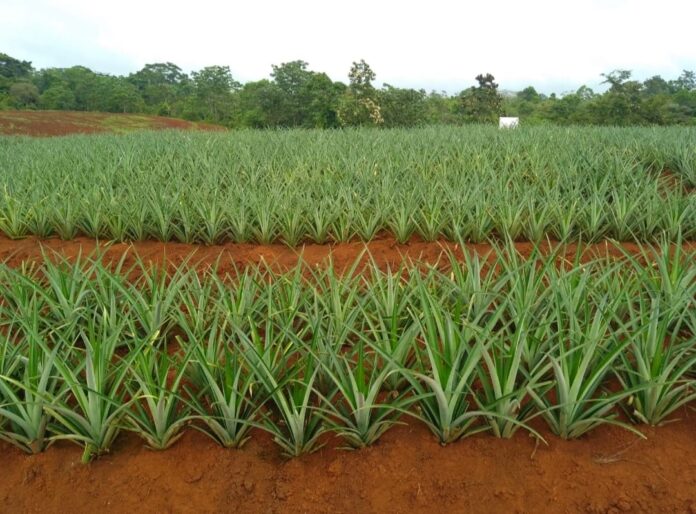Buying land for farming is a significant investment that requires careful planning and consideration. Whether you’re a seasoned farmer looking to expand your operations or a newcomer to agriculture, understanding the process of purchasing farmland is crucial.
This guide will walk you through the key steps to ensure you make an informed decision. Moreover, you will learn in depth about how to buy land for farming.
1. Assess Your Needs and Goals
Define Your Farming Objectives
Start by identifying what you want to achieve with your farm. Are you interested in growing crops, raising livestock, or both? Your farming goals will influence the type of land you need.
Determine the Scale of Your Operation
Consider the size of the farm you wish to operate. Small-scale farms might require just a few acres, while commercial operations need much more.
2. Research Suitable Locations
Climate and Soil Conditions
Choose a location with the right climate and soil for the crops you plan to grow or the animals you intend to raise. Different regions have different advantages and challenges.
Accessibility and Infrastructure
Ensure the land is accessible by road and has the necessary infrastructure, such as water supply, electricity, and proximity to markets.
3. Evaluate Your Budget
Initial Purchase Cost
Determine how much you can afford to spend on purchasing the land. Keep in mind that the cost of farmland varies widely depending on location and quality.
Ongoing Expenses
Consider the ongoing costs associated with farming, such as equipment, seeds, fertilizers, and labor. Make sure your budget covers these expenses.
4. Find Available Land
Real Estate Listings
Check real estate websites and local listings for available farmland. Sites like Zillow, Realtor.com, and local agricultural real estate agencies are good starting points.
Auctions and Government Sales
Look into land auctions and government sales, which can offer opportunities to buy farm Costa Rica at lower prices. So that an individual can easily grab tactic about how to buy land for farming.
5. Inspect the Property
Physical Inspection
Visit the land in person to assess its condition. Look for signs of soil health, water sources, and any potential issues such as flooding or erosion.
Soil Testing
Conduct soil tests to determine the soil’s suitability for your intended crops. Soil quality can significantly impact your farm’s productivity.
6. Check Zoning and Land Use Regulations
Zoning Laws
Ensure the land is zoned for agricultural use. Zoning laws vary by location and can restrict what you can do with the property.
Land Use Restrictions
Check for any land use restrictions or easements that might affect your farming plans. These could include environmental regulations or rights of way.
7. Secure Financing
Loan Options
Explore financing options such as agricultural loans, grants, and subsidies. Institutions like the USDA offer various programs to help farmers purchase land.
Down Payment and Interest Rates
Be prepared to make a down payment and understand the interest rates associated with your loan. Shop around for the best terms.
8. Negotiate the Purchase
Price Negotiation
Negotiate the purchase price with the seller. Be prepared to make a fair offer based on your research and the property’s value.
Contract Details
Ensure the purchase contract includes all agreed-upon terms, including any contingencies such as passing a soil test or securing financing.
9. Close the Deal
Legal Assistance
Consider hiring a real estate attorney to review the contract and handle the closing process. They can ensure all legal requirements are met.
Final Walkthrough
Conduct a final walkthrough of the property before closing to ensure it is in the agreed-upon condition.
Conclusion
Buying land for farming is a complex process that requires careful planning and consideration. By assessing your needs, researching suitable locations, evaluating your budget, and following the steps outlined in this guide, you can make an informed decision and set yourself up for success in your farming endeavors.
FAQs
- What is the best type of soil for farming?
- Loamy soil is often considered the best for farming due to its balanced texture, fertility, and good drainage.
- How much land do I need to start a small farm?
- A small farm can start with as little as 5 to 10 acres, depending on the type of farming you plan to do.
- Can I get a loan to buy farmland?
- Yes, there are various loan options available for purchasing farmland, including those offered by the USDA and other financial institutions.
- What should I look for during a land inspection?
- Look for soil quality, water availability, access to infrastructure, and any signs of environmental issues such as erosion or flooding.
- Are there government programs to help new farmers?
- Yes, there are several government programs and grants designed to support new and beginning farmers in purchasing land and starting their operations.
You can visit our blogs here digitalnewslife.com to get more informative article about how to buy land for farming.

